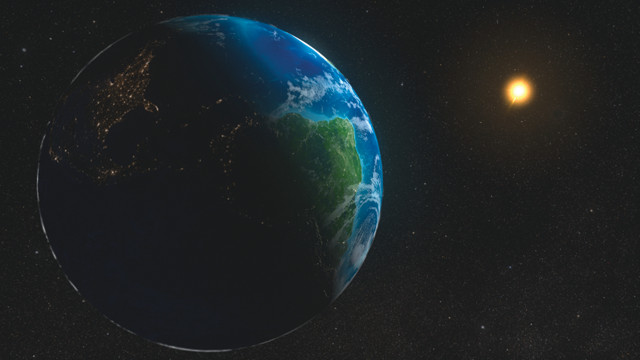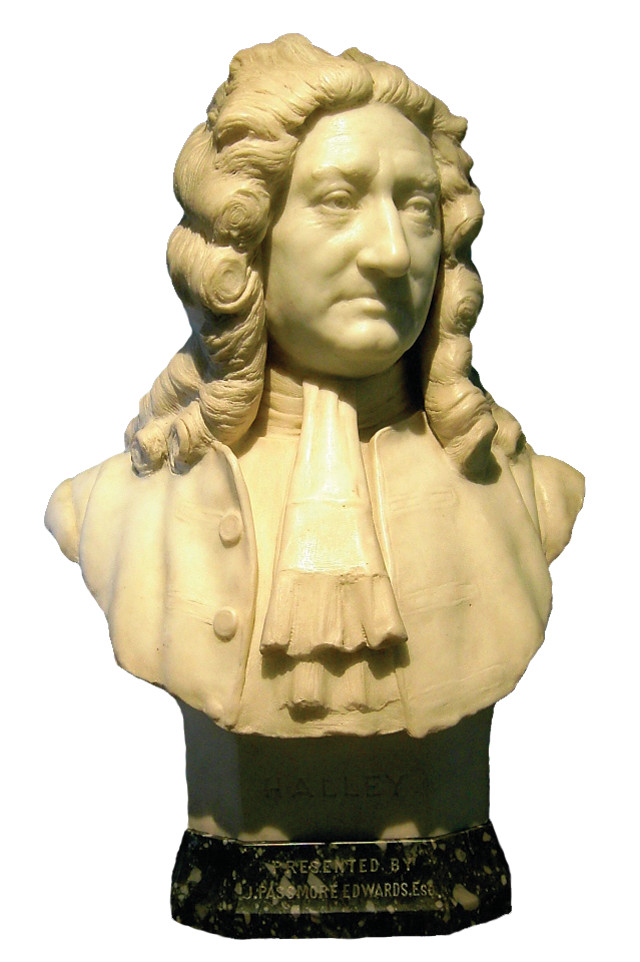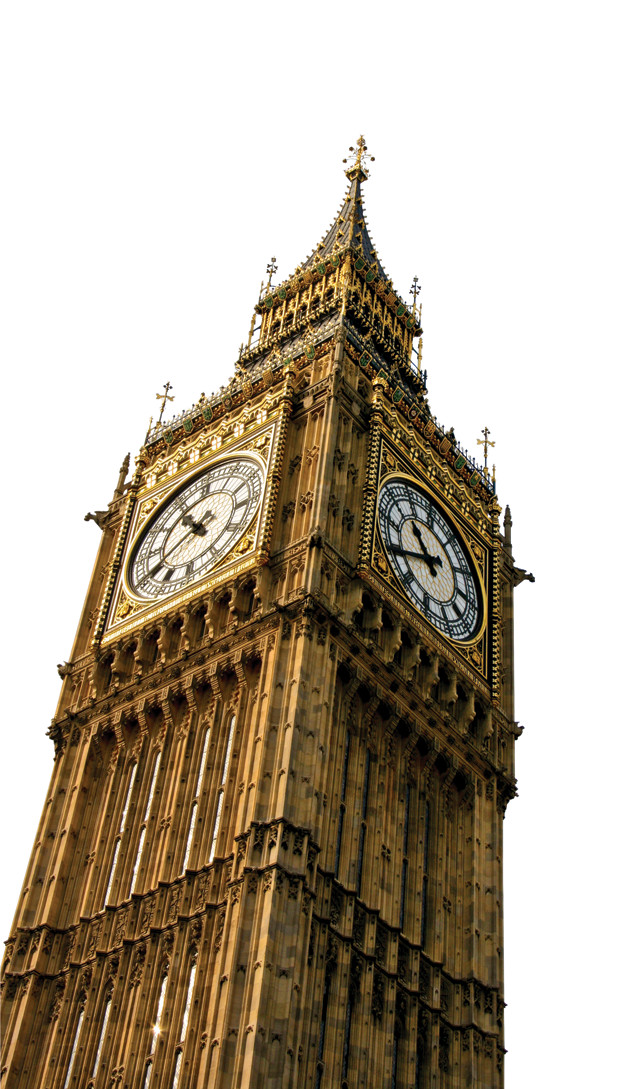
by Brian Fisher Johnson Tuesday, October 27, 2015

By the early 1960s, astronomers were calculating time based on Earth's orbit around the sun, rather than based on Earth's rotation. Credit: NASA.

English astronomer Edmond Halley was among the first to suspect that the motions of the heavens were not exactly consistent with a notion of a uniform measure of time as indicated by Earth's rotation. Credit: Klaus-Dieter Keller.
On June 30, 1972, at exactly 11:59 p.m. and 60 seconds, timekeepers did something most people only dream about: They added more time to the day.
The extra time was only one second. And the timekeepers didn’t add time to the day so much as adjust the timing of their atomic-based clocks to better match the passage of time as reflected by Earth’s rotation. But the event, the first addition of a “leap second” to official timekeeping, established a chronometric practice that remains central to our lives today.
“Clocks are devices that keep the time between calibrations with some fundamental phenomenon found in nature,” says Robert Nelson, a physicist and president of the Satellite Engineering Research Corporation in Bethesda, Md., who has studied timekeeping for years. Following cycles like the rising and setting of the sun were how people first told time. By the age of the ancient Egyptians, Nelson says, sundials kept track of time at the level of hours, although the length of an hour varied over the year as the sun’s angle changed with the seasons. By the 14th century, he says, mechanical clocks made it commonplace to keep hours of equal length. Finally, with the introduction of pendulum clocks in the 17th century, it became practical to count time down to the second.
By the mid-20th century, however, scientists realized that their timekeeping based on Earth’s rotation wasn’t quite matching up with the motions of the heavens. Here was the problem: If exactly 86,400 seconds as defined by a clock fill a rotational day, it would naturally follow that a certain star would return to the same point of view as seen by a telescope every 86,400 seconds. But when astronomers followed a star’s return by clocks, Nelson says, astronomers found that the star arrived slightly earlier or later in that telescope’s view.
Astronomers wondered, Nelson says, if perhaps it was not their measurements of the heavens that were wrong, but rather slight changes in Earth’s rotation that were throwing off their measurements. The invention of precise quartz clocks in the 1930s, for example, showed that the speed of Earth’s rotation varied with the seasons, owing to the fact that the atmosphere expands and contracts with the amount of solar radiation it receives, thus slightly altering how fast Earth rotates.
By the 1950s, Nelson says, a movement arose within the astronomical community to switch from nonuniform measurements of time based on the rotation of Earth to what was thought to be a uniform measure of time based on Earth’s orbit around the sun. To create this uniform measure, astronomers used a formula developed by astronomer Simon Newcomb in the late 19th century that is written in terms of the longitude of the sun beginning in the year 1900. In 1960, the 11th General Conference of Weights and Measures ratified a definition of the second based on this formula as part of what was called Ephemeris Time, or ET. And because that time marker was based on the movement of celestial bodies, not the non-uniform rotation of Earth, the movement of the celestial bodies now matched astronomers’ predictions.
Although ET solved the deviations, it wasn’t the most practical measure of time, Nelson notes. To calculate ET, astronomers had to observe the position of the moon, which in turn, reflected the orbit of Earth. These observations had to be followed by lengthy calculations, often meaning that astronomers determined the time well after that time had actually passed.
But around this same time, Nelson says, astronomers with the U.S. Naval Observatory and the National Physical Laboratory in England had been able to translate the length of a second as described by ET into the frequency associated with a particular transition of the cesium-133 atom, creating the basis for practical atomic clocks. By 1967, the timekeeping community caught on, and in October of that year, the 13th General Conference on Weights and Measures redefined the second based on the transition of the cesium atom.
But the story didn’t end there. As scientists had long realized, Nelson says, Earth’s rotation is on an overall trend of deceleration as a result of tidal friction — the tidal force as driven by the moon’s gravity, which removes energy from Earth’s rotation. In fact, based on the locations and dates of ancient eclipses, scientists now know that a day as defined by Earth’s rotation is about two onethousandths of a second longer than it was nearly 200 years ago, Nelson says. As a result, by the 1960s, the second as defined by Newcomb’s formula and the cesium atom was shorter than the second as defined by one complete rotation of Earth.
In the interest of keeping atomic time in line with Earth’s rotation (which still aided ships in their celestial navigation), stations that were broadcasting the passage of seconds via radio signals began artificially adjusting the signals so that 86,400 “second” intervals filled a rotational day. This practice was just fine with the astronomical community, as many astronomers continued to track time by measuring the heavens. But it bothered physicists and engineers, whose technology had come to depend on very uniform measurements of time.

The advent of mechanical clocks, such as the clock in Big Ben in England, made it commonplace to keep hours of equal length, unlike the unequal hours kept by a sundial. Credit: ©iStockphoto.com/Spin12.
So, instead of adjusting atomic time each day to keep it in line with Earth’s rotation, the scientific community decided that atomic time should be allowed to fall behind the rotational day until the difference between the two time markers approached one second. At that point, the two time markers would be synchronized by the addition of a “leap second” to the atomic clocks. And so, on June 30, 1972, at exactly 12:59 p.m. and 60 seconds, the first leap second was added.
Since then, timekeepers have added an additional 23 leap seconds. These days, the addition of a leap second is decided by the International Earth Rotation Service (IERS), begun by the International Astronomical Union and the International Union of Geodesy and Geophysics in 1987. Aided by technologies such as Very Long Baseline Interferometry— which measures changes in Earth’s rotation based on differences between the arrival times of microwave signals emitted from space —IERS can determine if Earth’s rotation has slowed enough to warrant the addition of a leap second in the near future. The last leap second was added at the end of December 2008. Meanwhile, IERS has announced that it will not be adding another leap second until sometime after the end of this month.
But the leap second is not without its problems, says Nelson, who favors eliminating the leap second. The process of adding a leap second can temporarily shut down communication systems, while computers can also struggle to add the time. And because ships, for example, now use technologies like GPS and no longer rely on celestial navigation (which required timekeeping to be in line with Earth’s rotation), the leap second is obsolete, he says. “Our society today depends on complex timekeeping systems to regulate modern engineering systems, so we can’t in the future afford to have these one second interruptions,” he adds. “Our time is now defined by clocks, not by the rotation of the Earth.”
Dropping the leap second would allow atomic time to slip more and more behind time as reflected by Earth’s rotation. But the rate of separation between the two time markers is so slow that it would take a millennium for atomic time and rotational time to separate by a whole hour, Nelson says. In that case, we could simply add an hour to atomic time, he adds — not unlike what we do with daylight saving time.
For a more scientific account of the leap second, read “The leap second: its history and possible future” published in the journal Metrologia (2001, volume 38) by Robert Nelson and colleagues.
© 2008-2021. All rights reserved. Any copying, redistribution or retransmission of any of the contents of this service without the expressed written permission of the American Geosciences Institute is expressly prohibited. Click here for all copyright requests.